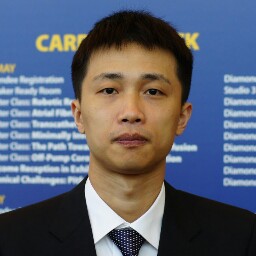Yue Wang
age ~62
from Sugar Land, TX
- Also known as:
-
- Yu E Wang
- Milton Sombatsiri
Yue Wang Phones & Addresses
- Sugar Land, TX
- Houston, TX
- Sutherlin, OR
- Bryan, TX
- College Sta, TX
- Laramie, WY
Isbn (Books And Publications)

Big Cities Health Inventory, 1997: The Health of Urban U.S.A
view sourceAuthor
Yue Wang
ISBN #
0788181734
Medicine Doctors

Yue Wang
view sourceSpecialties:
Internal Medicine, Diabetes
Work:
Yue Ray Wang MD LLC
2065 Klockner Rd, Trenton, NJ 08690
(609)5861001 (phone), (609)5867634 (fax)
2065 Klockner Rd, Trenton, NJ 08690
(609)5861001 (phone), (609)5867634 (fax)
Education:
Medical School
Beijing Med Univ, Beijing City, Beijing, China
Graduated: 1986
Beijing Med Univ, Beijing City, Beijing, China
Graduated: 1986
Procedures:
Arthrocentesis
Cardioversion
Lumbar Puncture
Vaccine Administration
Cardioversion
Lumbar Puncture
Vaccine Administration
Conditions:
Acne
Acute Bronchitis
Acute Conjunctivitis
Acute Pharyngitis
Acute Sinusitis
Acute Bronchitis
Acute Conjunctivitis
Acute Pharyngitis
Acute Sinusitis
Languages:
Chinese
English
Spanish
Tagalog
English
Spanish
Tagalog
Description:
Dr. Wang graduated from the Beijing Med Univ, Beijing City, Beijing, China in 1986. He works in Hamilton Square, NJ and specializes in Internal Medicine and Diabetes. Dr. Wang is affiliated with Robert Wood Johnson University Hospital Hamilton, St Francis Medical Center and University Medical Center Of Princeton At Plainsboro.

Yue Wang
view sourceSpecialties:
Hematology/Oncology
Work:
Lankenau Medical Center Hematology/Medical Oncology Medical Program
100 E Lancaster Ave STE 4413, Wynnewood, PA 19096
(484)4763060 (phone), (484)4763577 (fax)
100 E Lancaster Ave STE 4413, Wynnewood, PA 19096
(484)4763060 (phone), (484)4763577 (fax)
Education:
Medical School
Sun Yat Sen Univ of Med Sci, Guangzhou, China (242 21 Pr 1/71)
Graduated: 2000
Sun Yat Sen Univ of Med Sci, Guangzhou, China (242 21 Pr 1/71)
Graduated: 2000
Languages:
English
Description:
Dr. Wang graduated from the Sun Yat Sen Univ of Med Sci, Guangzhou, China (242 21 Pr 1/71) in 2000. She works in Wynnewood, PA and specializes in Hematology/Oncology.

Yue M. Wang
view sourceSpecialties:
Ophthalmology
Work:
Florida Eye Associates IncAmbulatory Surgery Center Of Brevard
719 E New Hvn Ave, Melbourne, FL 32901
(321)9844405 (phone), (321)7264061 (fax)
719 E New Hvn Ave, Melbourne, FL 32901
(321)9844405 (phone), (321)7264061 (fax)
Languages:
English
Spanish
Spanish
Description:
Dr. Wang works in Melbourne, FL and specializes in Ophthalmology. Dr. Wang is affiliated with Holmes Regional Medical Center.

Yue Wang
view sourceSpecialties:
Neurology, Epileptologist
Work:
University Of Florida PhysiciansUF Health Neurology
2000 SW Archer Rd FL 3, Gainesville, FL 32608
(352)2735550 (phone), (352)6274295 (fax)
2000 SW Archer Rd FL 3, Gainesville, FL 32608
(352)2735550 (phone), (352)6274295 (fax)
Languages:
English
Spanish
Spanish
Description:
Dr. Wang works in Gainesville, FL and specializes in Neurology and Epileptologist. Dr. Wang is affiliated with UF Health Shands Hospital.

Yue Wang
view sourceSpecialties:
Pathology
Anatomic Pathology
Anatomic Pathology
Name / Title
Company / Classification
Phones & Addresses
Manager
INTERLINK OILFIELD SUPPLY LLC
4416 Liberty Wood Ln, Sugar Land, TX 77479
1201 Dulles Ave, Stafford, TX 77477
4914 Plantation Run Dr, Sugar Land, TX 77478
1201 Dulles Ave, Stafford, TX 77477
4914 Plantation Run Dr, Sugar Land, TX 77478
Director
INTERLINK CONSULTING,INC
Business Consulting Services
Business Consulting Services
9215 Clarewood Dr #327, Houston, TX 77036
Us Patents
-
Multiple Anisotropic Parameter Inversion For A Tti Earth Model
view source -
US Patent:20100135115, Jun 3, 2010
-
Filed:Dec 3, 2008
-
Appl. No.:12/327671
-
Inventors:Yonghe Sun - Cypress TX, US
Yue Wang - Danville CA, US
Tong Xu - Chengdu, CN
Leonard Lin Zhang - Sugar Land TX, US -
International Classification:G01V 1/28
-
US Classification:367 75
-
Abstract:A method for determining values of anisotropic model parameters of a Tilted Transversely Isotropic (TTI) Earth model, the anisotropic parameters including P-wave velocity (Vp) along a tilted symmetry axis, the Thomsen anisotropy parameters δ and ε (or η=(ε−δ)/(1+2δ)) representative of variations of wave velocities as a function of wave propagation angle from the symmetry axis, the method including acquiring input data for a geological volume of interest; determining a theoretical relationship between the input data and the anisotropic model parameters; and calculating the values of the anisotropic model parameters at each of a plurality of subsurface locations in the geological volume of interest based on the theoretical relationships and the input data using workflows involving iterative or sequential combinations of processes including input data preprocessing, conventional tomographic inversion, three dimensional tomographic inversion based on a tilted transversely isotropic model, and three dimensional pre-stack depth migration using a tilted transversely isotropic model.
-
System And Method For Seismic Beam Formation That Accounts For Equipment Misalignment
view source -
US Patent:20110103185, May 5, 2011
-
Filed:Nov 5, 2009
-
Appl. No.:12/613442
-
Inventors:Norman Ross Hill - Houston TX, US
Yue Wang - Danville CA, US -
International Classification:G01V 1/28
-
US Classification:367 53
-
Abstract:Seismic data representing the propagation of seismic energy through a geologic volume of interest is processed. The seismic energy propagates through the geologic volume of interest from one or more source locations at or near the geologic volume of interest to one or more detector locations at or near the geologic volume of interest. In processing the seismic data, the seismic energy is modeled as beams (e.g., Gaussian beams). The processing performed (i) corrects for misalignment of the one or more source locations and/or the one or more detector locations with a regular, predetermined mesh, and (ii) steers the seismic data based on the modeled beams.
-
Method And System For Computational Acceleration Of Seismic Data Processing
view source -
US Patent:20120159124, Jun 21, 2012
-
Filed:Dec 15, 2010
-
Appl. No.:12/969337
-
Inventors:Chaoshun Hu - Houston TX, US
Yue Wang - Sugar Land TX, US
Tamas Nemeth - San Ramon CA, US -
International Classification:G06F 9/30
G06F 9/312
G06F 12/08 -
US Classification:712205, 712220, 711119, 711E12017, 712E09016, 712E09033
-
Abstract:A computer-implemented method and a system for computational acceleration of seismic data processing are described. The method includes defining a specific non-uniform memory access (NUMA) scheduling for a plurality of cores in a processor according to data to be processed; and running two or more threads through each of the plurality of cores.
-
Multiple Anisotropic Parameter Inversion For A Tti Earth Model Using Well Data
view source -
US Patent:20120185171, Jul 19, 2012
-
Filed:Feb 7, 2012
-
Appl. No.:13/368134
-
Inventors:Yonghe Sun - Cypress TX, US
Yue Wang - Danville CA, US
Tong Xu - Cheng Du, CN
Leonard Lin Zhang - Sugar Land TX, US -
International Classification:G06F 19/00
-
US Classification:702 18
-
Abstract:A method for determining values of anisotropic model parameters of a Tilted Transversely Isotropic (TTI) Earth model, the method including obtaining an initial TTI earth model that substantially flattens common-imaging-point gathers and substantially ties seismic data to well data; inputting checkshot data and/or VSP data to determine updated values of Vpnear the well locations; determining an incremental improvement Δδ; extrapolating the relative change Δδ from near-well locations to the entire three dimensional TTI earth model; determining updated values of Vp=Vp(1−Δδ); inputting near-to-mid-offset/angle and mid-to-far-offset/angle residual moveout information; and providing updated values of δ and η.
-
Stable Shot Illumination Compensation
view source -
US Patent:20120265445, Oct 18, 2012
-
Filed:Apr 13, 2011
-
Appl. No.:13/086032
-
Inventors:Linbin Zhang - Danville CA, US
Wei Liu - San Ramon CA, US
Yue Wang - Sugar Land TX, US
Guojian Shan - San Ramon CA, US -
Assignee:Chevron U.S.A. Inc. - San Ramon CA
-
International Classification:G06F 19/00
-
US Classification:702 14
-
Abstract:Various embodiments provide a system and a shot illumination compensation method implemented on a computer system for imaging a subsurface formation. The method includes receiving, by the computer system, seismic data produced by an acoustic energy source and reflected by the subsurface formation; and generating, by the computer system, an image of the subsurface formation based on the seismic data and a spatially varying damping parameter.
-
System And Method For Seismic Imaging Of Complex Subsurface Volumes
view source -
US Patent:20210055438, Feb 25, 2021
-
Filed:Aug 22, 2019
-
Appl. No.:16/548582
-
Inventors:- San Ramon CA, US
Yue WANG - Sugar Land TX, US
Siwei LI - Houston TX, US -
International Classification:G01V 1/34
G01V 1/36
G01V 1/28
G01V 1/30 -
Abstract:A method is described for seismic imaging including generating extended image gathers by extended reverse time migration of a seismic dataset using an earth model; processing the extended image gathers to generate processed image gathers; performing extended modeling based on the processed image gathers to generate a modeled seismic dataset; enhancing the processed image gathers to generate an enhanced image; performing extended modeling based on the enhanced image gathers to generate a modeled enhanced dataset; differencing the modeled enhanced dataset and the modeled seismic dataset to determine a data residual; inverting the data residual to generate a model residual; updating the earth model based on the model residual to create an updated earth model; performing seismic imaging of the seismic dataset using the updated earth model to create an improved seismic image. The method may be executed by a computer system.
-
System And Method For Dip-Guided Seismic Image Stacking
view source -
US Patent:20170176616, Jun 22, 2017
-
Filed:Dec 21, 2015
-
Appl. No.:14/975997
-
Inventors:- San Ramon CA, US
Guojian Shan - Sugar Land TX, US
Yue Wang - Sugar Land TX, US
Craig Alan Barker - Sugar Land TX, US -
International Classification:G01V 1/30
G01V 1/36 -
Abstract:A method is described for seismic imaging of the subsurface using dip-guided optimized stacking. The method computes weighting functions for a plurality of single-shot migrated images, unstacked seismic images, or partially stacked seismic images based on a slant stack performed using an input dip dataset; applying the plurality of weighting functions to the plurality of single-shot migrated images, unstacked seismic images, or partially stacked seismic images, or a plurality of dip-filtered images to create a plurality of weighted images; and summing the plurality of weighted images into a stacked seismic image. The method may be executed by a computer system.
-
System And Method For Velocity Analysis In The Presence Of Critical Reflections
view source -
US Patent:20160109592, Apr 21, 2016
-
Filed:Oct 17, 2014
-
Appl. No.:14/516975
-
Inventors:Yonghe J. Sun - Cypress TX, US
Yue Wang - Sugar Land TX, US
Jianlei Liu - Katy TX, US
Leonard Lin Zhang - Sugar Land TX, US -
Assignee:CHEVRON U.S.A. INC. - San Ramon CA
-
International Classification:G01V 1/30
G01V 1/36 -
Abstract:A method is described for processing residual moveout in seismic image data gathers representing critical reflections. The method includes receiving seismic image data arranged as a function of an angle or offset parameter including a high-velocity-contrast event with post-critical. The method also includes applying a wavelet de-stretch filter to the seismic data to correct wavelet stretching. The method also includes applying a fan-filter to remove coherent noise in the one or more post-critical traces; picking residual moveout of the high-velocity-contrast event; adjacent-trace differencing to detect the impact of phase change at critical reflections in residual moveouts, and applying a median-filter to the residual moveout to reduce the impact of phase change of the high-velocity-contrast event in the one or more post-critical traces. The median-filtered and reconstructed residual moveout is used for improving a velocity model used for generating the seismic image gathers.
Lawyers & Attorneys
Vehicle Records
-
Yue Wang
view source -
Address:4107 Trent St, Sugar Land, TX 77479
-
VIN:5GAKRBED6BJ214320
-
Make:BUICK
-
Model:ENCLAVE
-
Year:2011
-
Yue Wang
view source -
Address:2206 Naomi St UNIT 9, Houston, TX 77054
-
VIN:1G1AK15F277406017
-
Make:CHEVROLET
-
Model:COBALT
-
Year:2007
Myspace
Googleplus

Yue Wang
Work:
Sir run run shaw hospital - Doctor (2002)

Yue Wang
Education:
HIT - CS

Yue Wang
Education:
Harold Washington College

Yue Wang
Tagline:
You may say I'm a dreamer, but I'm not the only one...

Yue Wang
Tagline:
+1

Yue Wang
Education:
Beijing foreign studies of univeristy - International relations

Yue Wang
Education:
Boston University

Yue Wang
Education:
Syracuse University
Flickr
Plaxo

Yue Wang
view sourceSCU

Yue Wang
view sourceIstanbul Turkey

WANG Yue
view sourceSingapore
Classmates

Atlantic Tourism and Hosp...
view sourceGraduates:
Jennifer Bomersine (1998-2002),
Ranee Billard (1997-1999),
Karla Callaghan (1998-2000),
Yue Wang (1998-2001),
Erin Macrae (1998-2000)
Ranee Billard (1997-1999),
Karla Callaghan (1998-2000),
Yue Wang (1998-2001),
Erin Macrae (1998-2000)
Youtube

Yue Qing Wang
view source
Yue Wang
view source
Yue Wang
view source
Yue LeAnn Wang
view source
Yue Wang
view source
Yue Wang
view source
Yue Wang
view source
Yue Wang
view sourceGet Report for Yue Wang from Sugar Land, TX, age ~62
















